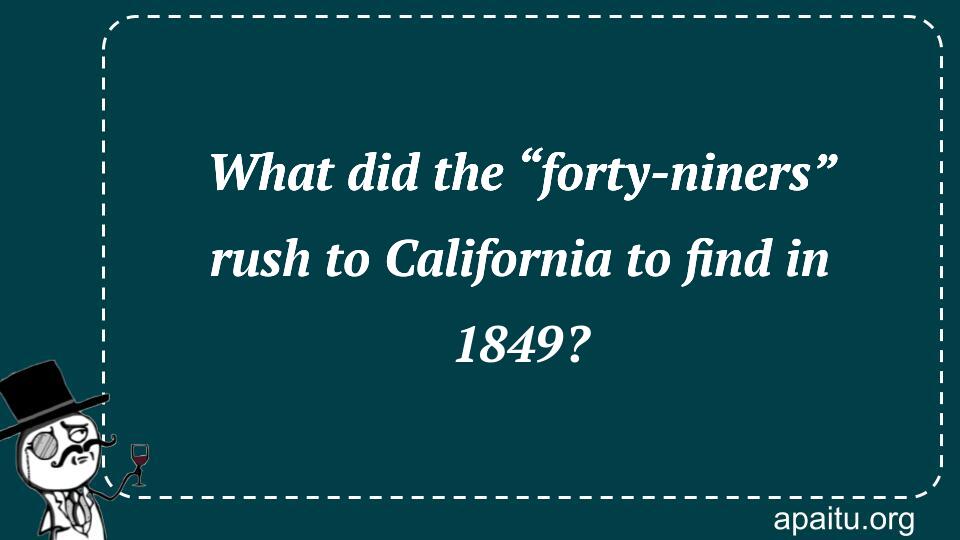Question
Here is the question : WHAT DID THE “FORTY-NINERS” RUSH TO CALIFORNIA TO FIND IN 1849?
Option
Here is the option for the question :
- Oil
- Gold
- Spices
- Silk
The Answer:
And, the answer for the the question is :
Explanation:
News of the discovery of gold in California spread in 1849. Soon, tens of thousands of people were heading to California in search of gold, hoping to strike it rich or make a living by providing goods and services to the increasing number of eager prospectors. The ‘forty-niners,’ as they were known, were the immigrants to California in 1849, and they revolutionized both the state’s economy and society.

In 1849, a phenomenon known as the California Gold Rush captivated the imaginations of people from all walks of life. Commonly referred to as the “forty-niners,” thousands of individuals flocked to California in search of one precious metal: gold. This historic event, fueled by dreams of wealth and prosperity, forever altered the landscape of California and left an indelible mark on the history of the United States.
The discovery of gold in California in early 1848 set off a frenzy that would quickly spread across the nation and even attract adventurers from around the world. News of the gold strike at Sutter’s Mill in Coloma, California, spread like wildfire, igniting a desire for fortune and adventure in the hearts of countless individuals.
The allure of gold was irresistible. People from all walks of life abandoned their homes, jobs, and families to embark on the treacherous journey to California. They sold their possessions, mortgaged their properties, and risked everything they had for the chance to strike it rich.
The journey to California was arduous and perilous. Many traveled thousands of miles across treacherous terrain, enduring harsh weather conditions, disease, and the constant threat of violence. These determined individuals faced unimaginable hardships, but their dreams of gold propelled them forward.
Upon arriving in California, the forty-niners faced a challenging and competitive environment. Gold prospecting required physical labor, resilience, and a keen eye for spotting potential deposits. Miners would pan for gold in rivers and streams, using simple tools like pans and shovels. As the gold rush intensified, more sophisticated methods of extraction, such as hydraulic mining and dredging, were employed.
The impact of the gold rush on California was profound. The population exploded, as people from all corners of the globe flocked to the golden state in search of fortune. Towns sprang up overnight, catering to the needs of the miners and providing essential services and supplies. San Francisco, once a small settlement, transformed into a bustling city and a hub of economic activity.
The gold rush also had far-reaching consequences for the indigenous peoples of California. Native American tribes faced displacement, violence, and the loss of their ancestral lands due to the influx of prospectors. Their way of life was disrupted, and their communities were forever changed.
While some fortunate individuals did strike it rich and amassed great wealth, the reality for most prospectors was far from glamorous. The vast majority of miners struggled to find significant gold deposits, facing disappointment, poverty, and even bankruptcy. However, the dream of discovering a fortune persisted, and the hope of finding that elusive nugget kept people digging.
Beyond the immediate economic impact, the California Gold Rush played a crucial role in shaping the development of the United States. The influx of peopl